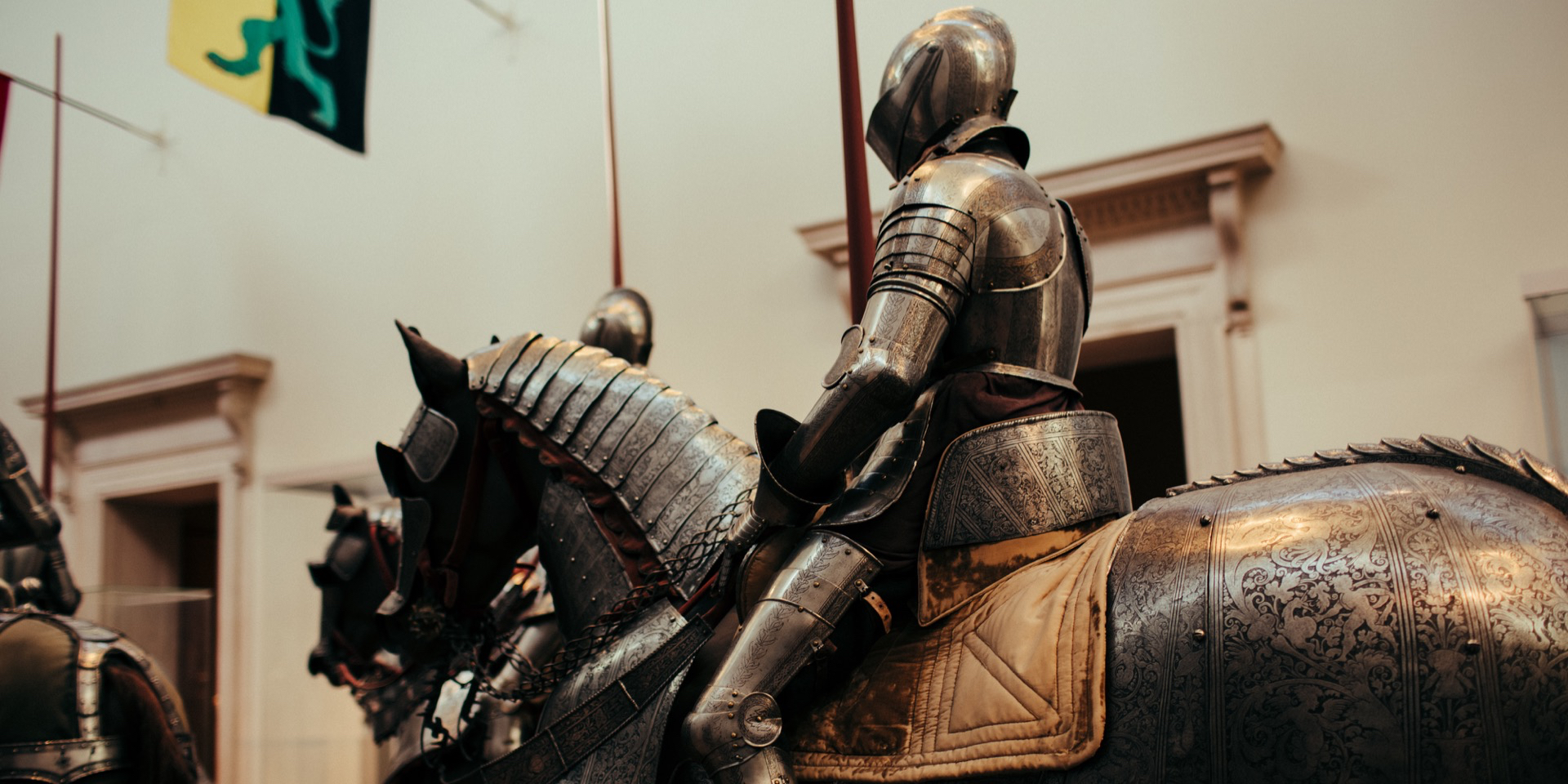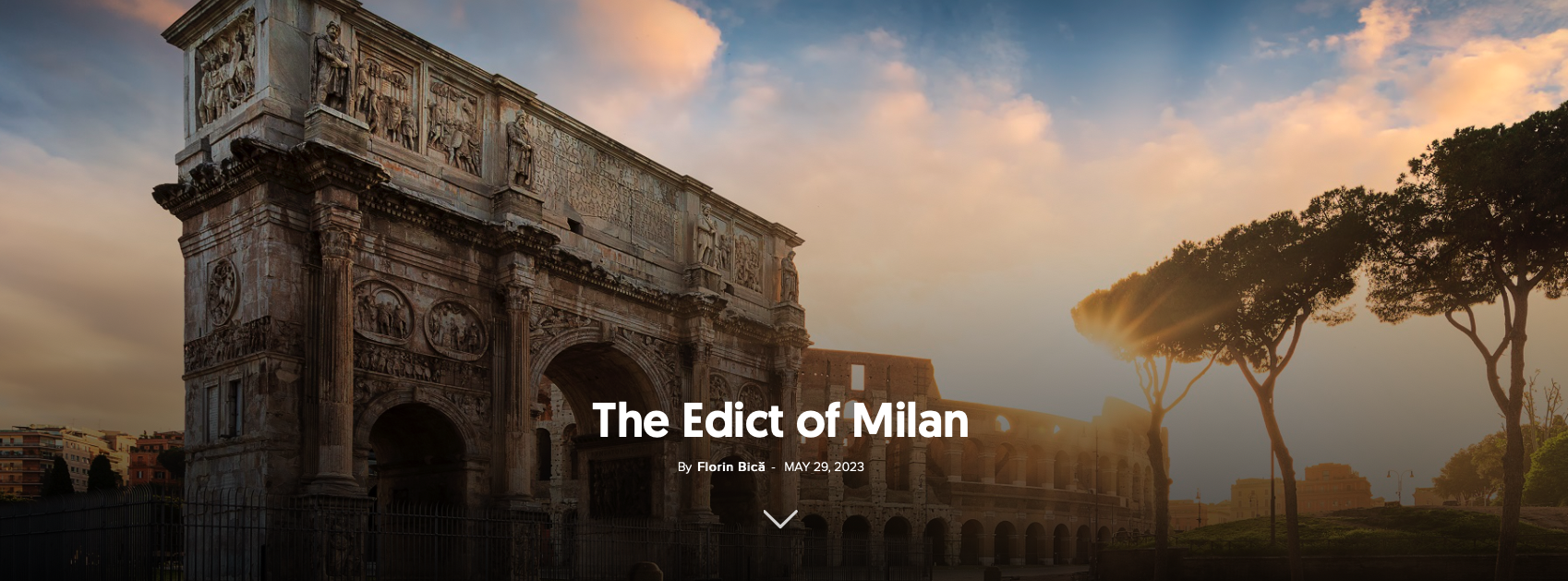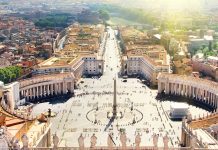The first eight days of the Council of Clermont were difficult. Although the participants were apparently discussing the reform of the clergy, or the excommunication of King Philip for adultery, the real focus of attention was the announced speech of “general interest” by Pope Urban II. Little did the prelates and important Frankish nobles present know that they were about to witness one of the most influential speeches of the Middle Ages.
The speech
On 27 November 1095, Urban II addressed the noble audience and the common people.[1] He began with a solemn appeal to history and honour—it was the ancestors who asked the Franks to come to the aid of their Christian brethren in the East who were being oppressed by the Turks. Then came the emotional turn. With tears, sobs, cries, and vigorous gestures, Urban is said to have described the cruelty of the Muslims, the suffering of the Christian martyrs and, above all, the mockery and desecration of the Holy Land. His appeal was constructed in three stages: one cannot stand by while God is mocked, one cannot disregard the eternal reward in heaven, and one cannot continue to fight with fellow Christians instead of uniting with them against the infidel enemy.
“Whoever, for devotion alone, not to gain honour or money, goes to Jerusalem to liberate the Church of God can substitute this journey for all penance” (Pope Urban II).
The crowd interrupted him by shouting “Deus lo vult!—God wills it!” Thousands of people threw themselves on the ground to beg forgiveness for their sins and scrambled to take up the cross reserved for those who had sworn to go to Jerusalem. Urban himself, surprised by the enormous success of his speech, tried to quell the crowd’s enthusiasm by demanding that priests should not join the crusaders without the consent of their superiors, that women should not join without the consent of their husbands, and that children and the elderly should stay at home. But there was no stopping the tide that had been set in motion. When the news arrived the next day that Raymond of Toulouse, the most powerful Frankish count, had taken the cross, success seemed assured. The departure date was set for 15 August 1096.
“The Clermont recipe”
The historian Christopher Tyerman has identified seven themes that made the Clermont speech the ideal formula for winning the masses, used successfully throughout the Middle Ages: assurance of salvation; fear of God’s disapproval; self-image; material, social and supernatural gain; the honour of war; a good cause; and a target of maximum resonance: Jerusalem.
Behind the scenes of the First Crusade
Jerusalem had been occupied by Muslims since the 7th century (638). At the beginning of the next century (711), the Iberian Peninsula was also in the shadow of the green flags. In 1071, the Seljuk Turks conquered part of Palestine after defeating the Byzantines at Manzikert.
When the Turks no longer allowed Christian pilgrimages to the Holy Land, Pope Gregory VII, patron of the future Pope Urban II, tried to support the Byzantine military effort with troops (1074), but the attempt failed.
With the death of the Seljuk Sultan Malik Shah in 1092, followed by the deaths of the Shia and Sunni caliphs of Egypt and Baghdad respectively, an opportunity seemed to present itself for the Orthodox emperor of Byzantium. In the context of the disintegration of the Seljuk Empire, Emperor Alexios I of Byzantium requested military assistance from Pope Urban II to re-establish his supremacy over the Muslim infidels. The opportunity suited the papal desire for supremacy in church and state, and was greeted with enthusiasm in Rome. However, neither the Emperor of Constantinople nor the Pope anticipated the magnitude of the response to this request.
The madness of an exodus
Beyond the papal speech at Clermont, the mobilisation was carried out with the help of crusade preachers. The most famous was Peter the Hermit, who rode from place to place on a donkey—like Jesus—with a letter he claimed to have received directly from God, urging people to enlist in the crusading army. So popular was this preacher that people apparently collected the hairs of his donkey as religious relics.[2]
In all, between 50,000 and 70,000 soldiers left in waves for Constantinople. The first wave was made up of poor, undisciplined and ill-coordinated Germans, Italians, and French, who were virtually slaughtered by the Turks. Not a single contingent reached Jerusalem—this was the “People’s Crusade.” Before they were annihilated, however, these early Crusaders were guilty of the Rhineland pogroms, an unprecedented series of massacres of Jews.
The second wave was the real Crusader army that would reach Jerusalem. The final assault on the city was successful on 15 July 1099, but the victory was overshadowed by the apocalyptic massacre of tens of thousands of Muslim men, children, and women, as well as Jews in the city. The crusaders herded the Jews into Jerusalem’s main synagogue and set it on fire, dancing around it and singing the Te Deum. “In the temple and the porch of Solomon, men rode in blood up to their knees and bridle reins,” wrote the chronicler Raymond of Aguilers, an eyewitness to the massacre.[3]
The Crusades in brief
“The undertaking of the Crusades [in the Holy Land] encompassed two centuries of useless wars, mismanaged and undiplomatically conducted by the daring nobility of the European West… Its overall picture consists of hundreds, even thousands, of petty battles, sieges, raids, and pillages, with an excessive loss of life on both sides, but especially on the part of the Western invaders. …. The chaotic, defeated crusades of the Crusaders opened the floodgates to half a millennium of Muslim victories in Eastern Europe and the Mediterranean.”[4]
The resolution…
Of the 100,000 or so Christians (soldiers and unarmed men) who set out for Jerusalem, probably no more than 14,000 reached their destination. “Urban II had been right: the war of the cross had proved a very severe penance indeed.”[5]
Despite these massive human losses, the First Crusade was the most successful in military terms. Ironically, it was to be followed by many other ill-fated expeditions to Jerusalem, the fourth of which has a unique history, as the Western army turned against Byzantium and conquered Constantinople. For this, eight hundred years later, Pope John Paul II expressed his regret to the Patriarch of Constantinople. Although the same John Paul apologised for the Church’s past sins in 2000, no Pope has ever explicitly apologised for the Crusades.
…and six centuries of consequences
From 1095, history was to record a long series of religious battles and much bloodshed. In 1291, the fall of Acre meant the loss of the last Christian stronghold in Asia and the end of the Great Crusades in the Holy Land. Nevertheless, Christian Europe dreamed of further military expeditions to recapture Jerusalem for another two centuries,[6] and the idea of a great crusade against the Turks was still very much alive in the 17th century.
In addition to the nine major crusades for the Holy Land,[7] the 13th-16th centuries saw crusades against ‘pagans’ such as the Moors, the Turks, but also against schismatic Christians such as the Albigensians, the Cathars, the Waldensians, and the Hussites. At the time of the Reformation, the crusades became religious wars between Catholics and Anglicans, Lutherans or Calvinists.
For centuries after the birth of the concept of the crusade—a war that saves the participants—the justification of war and killing for a noble cause never ceased to find new forms of expression.
Norel Iacob is editor-in-chief of Signs of Time Romania and ST Network.




















